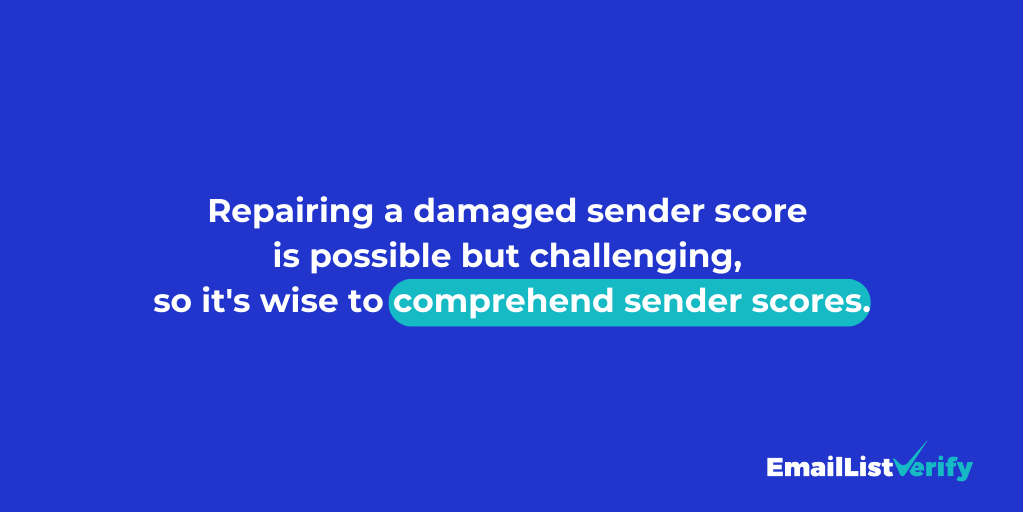What Are Spam Traps and How to Avoid Them?

Quick links
Remember when we navigated the world of honeypots and how they work? Now, it’s time to switch gears and unravel the details of spam traps.
Email marketing is a delicate balance between building trust and achieving reach. Unfortunately, things like spam traps can easily derail even the best-crafted campaign.
Ignoring the impact of spam traps can affect your campaigns significantly, tarnish your reputation, and even cause your emails to be blocked entirely. As digital marketing continues to evolve, understanding these elusive traps and the strategies to avoid them has never been more crucial.
Let’s break down what they are, how they work, and how to steer clear of them effectively.
What is a Spam Trap?
A spam trap is, at its core, an email address that is specifically set up to catch spammers. But it can be also created by repurposing an unused or abandoned email address.
Spamhaus Technology defines spam traps as “an email address traditionally used to expose illegitimate senders who add email addresses to their lists without permission.” Essentially, it’s like digital bait — luring in those who aren’t following ethical emailing standards.
According to SuperOffice, over 21% of worldwide marketing emails fail to reach the inbox — and a significant reason behind this is falling into spam traps. While spam emails being caught is a good thing, the truth is that many authentic, non-spammy emails also end up in a spam trap.

Types of Spam Traps
Navigating the world of email marketing involves understanding various pitfalls, and spam traps are certainly one of the trickiest.
For starters, not all spam traps are created equal, there are several types, each designed to target specific flaws in an email marketing strategy.
The typo trap
Have you ever mistyped an email address? It happens.
Some spam traps capitalize on this by using common misspellings of popular domains. For instance, “gamil.com” instead of “gmail.com.”
Many businesses unknowingly collect these incorrect addresses when they buy email lists or fail to implement proper email verification techniques. And they end up paying for it in the long run when they start being blacklisted as spammers.
The expired trap
Emails that once belonged to real users but have been abandoned and repurposed as traps fall under this category.
For example, ISPs might reactivate old addresses to catch marketers who aren’t regularly cleaning their lists.
Despite what many think, an email address doesn’t always last forever.
Over time, many become inactive or are abandoned by their users. Service providers may repurpose these addresses as spam traps after a certain period. When marketers continue to send emails to these dormant addresses, it’s a clear indication they aren’t maintaining their email lists.
In fact, approximately 30% of email addresses go stale annually simply because of churn attributable to customers changing email addresses. Continuously sending emails to expired traps can be particularly damaging, leading ISPs (Internet Service Providers) to flag the sender as a potential spam source.
The honeypot trap
These are specifically set up to catch spammers.
According to Unione, “The name originates from real-life honeypots that attract animals. Just like a curious bear in pursuit of honey runs toward a honeypot, a spammer in pursuit of a victim runs toward a honeypot email address.”
Honeypot traps are the most malicious of the lot. Unlike the passive nature of typo and expired traps, honeypots are actively set up by organizations and ISPs to catch spammers in the act.
They’re brand new email addresses that have never been used (or repurposed unused and abandoned emails), and they’re not shared or publicized — meaning they shouldn’t receive any emails.
Falling into a honeypot trap is a significant red flag and can result in severe consequences, ranging from deliverability issues to blacklisting.
How Do Spam Traps Work?
Spam traps monitor incoming emails. Once your email hits one, it signals to ISPs that your mailing practices are less than ideal.
This can lead to your emails being blocked or ending up in the spam folder, affecting your sender’s reputation.
Spam traps are essentially digital tripwires, set up to identify and monitor unsolicited and potentially harmful email traffic.
Their operation is simple yet highly effective. These email addresses are either intentionally created by ISPs or email organizations, or they are repurposed from inactive email accounts.
The catch? They don’t opt into any email campaigns.
Once a marketer sends an email to one of these addresses, alarms are triggered. The ISP or organization behind the trap will know that the email wasn’t solicited.
How the sender acquired the address — whether through poor list management, scraping websites, or purchasing lists — becomes secondary. The primary concern becomes the violation of sending unsolicited emails.
Some advanced traps even monitor the type and frequency of emails, aiming to understand the sender’s behavior better. This data helps email providers understand potential spam threats, so they can then refine and improve their filtering algorithms.
How Can Spam Traps Affect Your Email Marketing?
Getting caught in a spam trap isn’t just about one misdirected email. Here’s how they can impact your email marketing efforts:
Decreased Deliverability
Hitting a spam trap is a clear indication to ISPs that you’re not following best email practices. As a result, your emails might not make it to the inbox but land in the spam folder instead.
Lowered Sender Reputation
Much like a credit score, your sender reputation is crucial in the email marketing world. A poor reputation means emails could be blocked entirely by some ISPs.

Marketers with lower sender scores see significantly reduced open rates, directly affecting campaign ROI.
According to Bouncer, “While it is possible to repair a damaged sender score, it’s not easy, so it’s best to understand sender scores and how to keep yours high from the get-go.”
Potential Blacklisting
Continuously hitting spam traps could get your IP address or domain blacklisted.
Reduced Engagement Rates
If your emails end up in the spam folder or don’t get delivered at all, open rates, click-through rates, and conversions will naturally decline. This can significantly impact the effectiveness of your campaigns and your ROI.
Financial Costs
Dealing with the aftermath of hitting spam traps isn’t just about restoring reputation or improving deliverability. It can also have direct financial implications. The time and resources spent on troubleshooting, combined with potential lost sales from ineffective campaigns, can add up quickly.
How To Find And Avoid Spam Traps
These traps can not only damage your reputation but can also have long-term consequences for your email deliverability.
Understanding how to identify and sidestep these pitfalls is key to maintaining a healthy relationship with your subscribers and ensuring your messages consistently land in their intended inboxes.
Monitor blacklists
Blacklists (or blocklists) are databases that flag IP addresses notorious for sending spam or unwanted emails. Ending up on a blacklist can severely cripple your email deliverability.
Why? Because if your IP address is flagged, it’s a clear indication you’ve possibly bumped into spam traps before.
TIP: Tools such as MXToolbox or DeBounce can be used to routinely scan these lists, ensuring your IP remains clear. These platforms allow for routine checks of your IP’s standing on various lists, helping you act quickly if you find yourself flagged.
With so many emails not reaching their intended inboxes because of blacklisted IP addresses, monitoring is essential.
Don’t buy email lists
We get it. The allure of instantly boosting your subscriber count by buying email lists is strong, but here’s the kicker: it’s not worth it.

These ready-made lists are often full of outdated or even decoy addresses that serve as spam traps.
Think of it this way: would you want strangers crashing your party? Probably not. Sending unsolicited emails to those who didn’t willingly sign up for your content feels the same way — and it can damage your brand’s image.
According to email marketing company Benchmark, bought email addresses simply aren’t high quality. Simply put, “many email addresses make their way onto these lists after already proving themselves to be duds, such as addresses that are clearly out of use or otherwise non-responsive. Nobody is selling high-quality leads because they’re keeping those leads for themselves.”
So, next time that shiny offer to buy an email list comes around, remember: quality over quantity!
Use double-opt-in
Imagine you’re setting up a fancy new security system at home. You wouldn’t settle for just one layer of protection, right?
The same logic applies to building an email list.
A double-opt-in system is like that extra security checkpoint, ensuring that everyone on your list genuinely wants to be there. Here’s how it works: after someone subscribes, they’ll receive a follow-up email asking them to confirm their subscription. Simple, but genius.
TIP: Platforms like MailChimp and ConvertKit are already aboard this train, championing the double-opt-in feature for its proven results.
Verify your email list
Let’s get real for a moment: we all dread that gut-wrenching feeling of sending an important email only to get that dreaded “undeliverable” notification.
That’s where list verification jumps in to save the day, especially when it comes to marketing campaigns.
This is where tools like EmailListVerify come in.
By screening for inactive or invalid emails, they substantially mitigate the risk of stumbling into spam traps. Through the process, EmailListVerify weeds out any typos, duplicates, or inactive addresses, ensuring your emails are landing in genuine, active inboxes.
So next time you’re gearing up for a big email blast, remember: a little prep with EmailListVerify can go a long, long way!
Keep your lists updated
Ensuring your email list is up-to-date is another effective strategy. By routinely segmenting the list to pinpoint subscribers who’ve remained passive or non-responsive over an extended period, marketers can fine-tune their audience. For example, a re-engagement campaign might be suitable for some, while others might be best removed entirely.
HubSpot’s research throws light on the urgency of this task: email lists experience a natural decay, dropping by approximately 22.5% every year.
Final Thoughts
Navigating the intricate waters of email marketing requires both diligence and a keen understanding of potential pitfalls like spam traps. These hidden obstacles, be they typos, expired, or honeypot traps, can pose significant challenges, tarnishing your brand’s reputation and undermining your marketing efforts.
To ensure your marketing campaigns remain impactful, it’s essential to monitor blocklists vigilantly, ensuring your domain and IP aren’t flagged. Building your email list organically and abstaining from purchasing lists can make a world of difference in maintaining the quality of your subscribers.
Implementing a double-opt-in process not only reaffirms the authenticity of your subscribers but also upholds the integrity of your list. Taking that extra step to verify email addresses and maintaining a periodic update regimen for your list can prevent dormant or malicious addresses from diminishing your campaign’s effectiveness.
Embracing these strategies and staying informed can elevate the success of your email marketing, ensuring genuine connections with your audience and enhancing your outreach.
Join Our Monthly Newsletter
Learn how to improve email deliverability and clean your email lists with and more.


